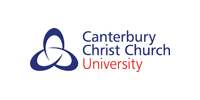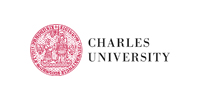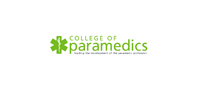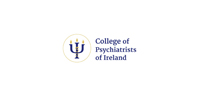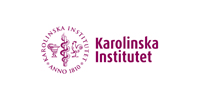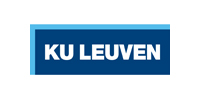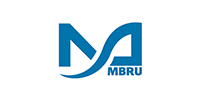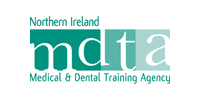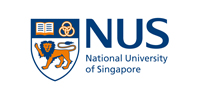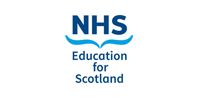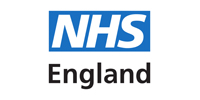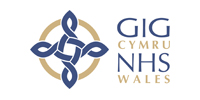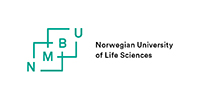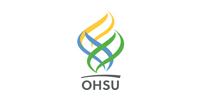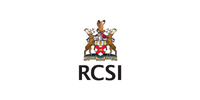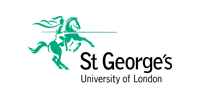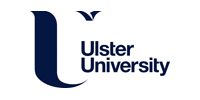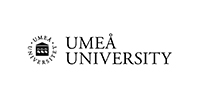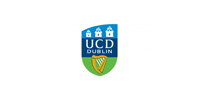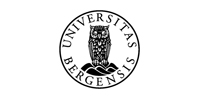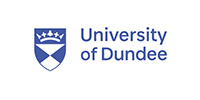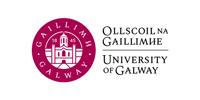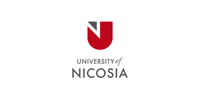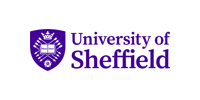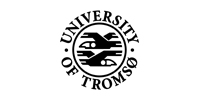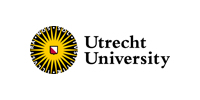Introduction
Every patient with (sub)acute headache and / or neck pain, particularly if these are accompanied by fever, should be examined for signs of meningeal irritation. Since children (particularly young children) and infants are often not able to clearly indicate whether, and if so where, they feel pain, all children with high fever should be examined for signs of meningeal irritation.
To identify or rule out signs of meningeal irritation, the examiner can employ certain techniques which involve manipulation of the head or extremities. If the meninges are inflamed, whereby menigeal pain can be felt upon movement and can also be present in rest (head and neck pain, but also back pain and pain in the limbs), provocation of the pain (for example through stretching) may evoke an individual and unpredictable reaction.
Possible reactions include crying, grimacing, screaming, pain upon flexion of hips, muscle tension, stiff neck, opisthotonus (lying with the head pushed back into the pillow) and involuntary movements (such as flexing the legs). Certain reactions have specific names (Kernig, Brudzinski).
Be aware that the location, nature, intensity and radiation pattern of the pain alone do not provide sufficient information to establish a reliable diagnosis. The diagnosis should be based on the overall combination of symptoms and impressions.
You should be aware that meningeal irritation is not always clearly present with meningitis or encephalitis. On the other hand, in small children meningeal irritation can arise with tonsillitis or even pneumonia; some viral infections with high fever (measles, chickenpox) are regularly associated with signs of meningeal irritation.
It is important to remember that searching for signs of meningeal irritation in a deeply comatose patient is of no value since a response to pain stimuli cannot be expected from such a patient. If, for whatever reason, trauma of the (cervical) vertebral column in particular is suspected, any manipulations involving the head and vertebral column are contraindicated. In these cases, it will be necessary to rule out a neck fracture before carrying out any investigations for meningeal irritation.
Procedure and interpretation
Stiff neck examination
- The patient lies on their back, with their head on the underlying surface (no pillow).
- Distract the patient as much as possible.
- Place one hand between the patient’s head and the underlying surface, without pulling their hair.
- Place the other hand on the patient’s sternum, to fix the trunk. Very gently turn the patient’s head to the left and the right a few times. In the absence of a local condition (arthrosis, myalgia) these movements should not be limited or painful.
- Next try to carefully flex the patient’s head (chin to chest) [Figure 95]. The physiological movement should end with almost maximum resistance when the chin touches the chest.
- If this movement stagnates, there may be a local condition (arthrosis), meningeal irritation or negativism.
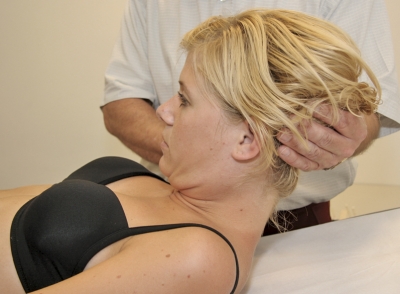 Figure 95
Figure 95
Brudzinski’s sign
- Repeat the above procedure.
- With a small tug unexpectedly flex the patient’s head.
- Note the reaction(s). Signs of pain and/or flexing the knees may indicate meningeal irritation [Figure 96]. In the case of the latter, Brudzinski’s sign is positive.
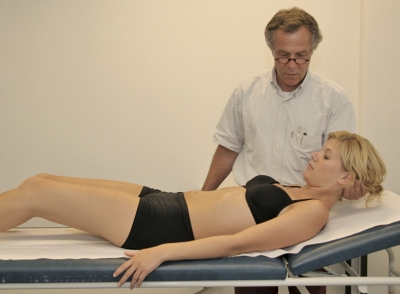 Figure 96
Figure 96
Kernig’s sign
- The patient lies on their back, with their head on the underlying surface (no pillow).
- Distract the patient as much as possible.
- Take the patient’s heel in your hand.
- Ask the patient to keep the leg in question as relaxed as possible (‘you don’t have to do anything’).
- Slowly raise the outstretched leg and note the patient’s reaction(s).
- If the knee joint in the raised leg bends, it may indicate meningeal irritation [Figure 97] and constitutes a positive Kernig’s sign. The leg will also bend if the patient has short hamstring muscles. In this case the patient will complain of pain in the hamstrings and not of increased head and neck pain.
- Repeat the procedure with the other leg.
- A consistent reaction will support the suspicion of meningeal irritation.
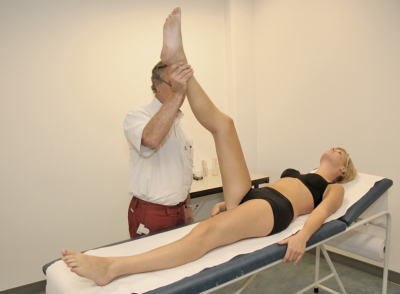 Figure 97
Figure 97
Brudzinski’s contralateral reflex sign
- The patient lies on their back, with their head resting on the underlying surface (no pillow)
- Distract the patient as much as possible.
- Take one of the patient’s ankles underhand in your hand and place the other hand just above the knee of the same leg.
- Ask the patient to keep the leg in question as relaxed as possible (‘you don’t have to do anything’).
- Flex the hip of that leg as far as possible, while keeping the knee extended. Note the patient’s reaction(s).
- If, while flexing the hip of one leg as far as possible, the contralateral (i.e. non-raised) leg also displays flexion of the hip and knee joint, there may be meningeal irritation (consider flexion contracture of that hip as well). This constitutes a positive Brudzinski’s contralateral reflex sign [Figure 98].
- Repeat the procedure on the other side.
- A consistent reaction reinforces the suspicion of meningeal irritation.
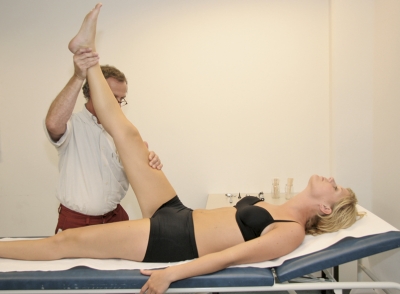 Figure 98
Figure 98

